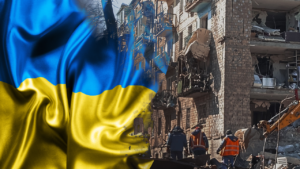A few year’s ago, the Kevin Bacon Game was all the rage among the entertainment crowd. The goal of the game was to see who could connect a selected celebrity to Kevin Bacon in the fewest number of steps. It was a take-off on six degrees of separation hypothesis (which is, that anyone on Earth can be connected to any other person on the planet through a chain of acquaintances with no more than five intermediaries). The hypothesis was first proposed in 1929 in a short story called “Chains” by the Hungarian writer Frigyes Karinthy. The concept is based on the idea that the number of acquaintances grows exponentially with the number of links in the chain, and so only a small number of links is required for the set of acquaintances to become the whole human population. It turns out the most connected actor in Hollywood was Rod Steiger not Kevin Bacon. The reason that Steiger became Hollywood’s most connected actor was that he took roles in almost every genre from drama to musicals.
Being connected is a good thing for an actor because it means that casting directors haven’t stereotyped you into playing just certain kinds of roles — the broader your portfolio the more likely that you’re going to make a good living acting rather than waiting tables. Being able to act in a number of roles means that character actors are generally better connected than leading men. Connectivity is also a good thing when talking about the global economy. The Rod Steiger of Southeast Asia is Singapore. That nation has worked hard to achieve that position. Singapore understands that the more roles you are involved in the better your chances are of staying on top; therefore, it plays an important role in finance, electronics, trade, and (increasingly) biotechnology. Singapore’s attempt to play a larger role in the latter sector was highlighted in a New York Times article by Wayne Arnold [“Singapore Acts as Haven for Stem Cell Research,” 17 August 2006]. What caught my eye was the reason that Singapore was actively courting the biotech sector:
The motive is economic. Faced with declining returns in electronics, the industry that vaulted Singapore into the ranks of the world’s richest nations, Singapore in 2000 began an initiative in biotechnology. “It was part of the overall strategy of diversifying the base of our economy and, more specifically, adding on a research-intensive sector,” said Beh Swan Gin, who heads the Biomedical Sciences Group at the Economic Development Board. Biotech joins a widening portfolio of industries Singapore is promoting. The nation is rapidly becoming a major center for private banking, for example, and it plans to build two of the world’s most expensive casino resorts to rev up tourism.
In other words, Singapore isn’t lamenting that the world is changing and it might be losing jobs that might be going elsewhere; rather, it is actively trying to change its position in the future it sees emerging. That is what a resilient enterprise does. A few years ago, Francis Fukuyama wrote, “Just as the twentieth century was the century of physics … the twenty-first promises to be the century of biology.” [“Second Thoughts: The Last Man in the Bottle,” The National Interest, Summer 1999, p. 17] Apparently Singaporean officials see the future in much the same way. The article relates a number of proactive steps that Singapore has made to ensure its place in the emerging world.
Using the same combination of tax holidays and incentives that made it a base for the world’s biggest electronics makers, Singapore has already managed to lure big drug companies. Factories pumping out pharmaceuticals for the likes of Merck, Pfizer and Schering-Plough now generate roughly 18 billion Singapore dollars ($11.4 billion) in annual revenue, and account for 5 percent of Singapore’s economy. But Singapore wants companies to do more than make drugs here. To persuade them to conduct basic drug research and development as well, Singapore offered to pay up to 30 percent of their building costs. At least 30 companies have responded, including the Swiss drug giant Novartis, which has opened an institute here to develop drugs to fight tuberculosis and the dengue virus. The centerpiece of Singapore’s biotechnology effort is the Biopolis, a seven-building biomedical hive that opened in late 2003 at a cost of 500 million Singapore dollars. It is outfitted with the latest high-tech equipment and features a bar, a day care center and an underground facility made to house a quarter-million laboratory mice. Authorities are now building a stem cell bank at Biopolis, which will be able to count on some of the world’s most liberal laws on human embryonic cell usage. Researchers hope that stem cells, the all-purpose building blocks that eventually turn into specific tissue like bone, muscle or nerves, can be harnessed and used to treat injuries or medical defects. Scientists have found that stem cells from embryos, unlike those in adults, have a greater flexibility and shelf life.
Not only are companies being attracted to Singapore, world-class scientists are also making the move. The article talks about the imminent departure of two of America’s most prominent cancer researchers:
Neal G. Copeland and Nancy A. Jenkins, are planning to arrive here next month to take posts at the Institute of Molecular and Cell Biology. The husband-and-wife team, who worked for 20 years at the National Cancer Institute in Maryland, said politics and budget cuts had left financing in the United States too hard to come by. “We wanted to be in a place where they are excited by science and things are moving upward,” said Dr. Copeland, who said he and his wife had already rented a condominium near Singapore’s shopping district and had joined the local American Club.
The article pointed out that Singapore has been able to attract other luminaries as well by offering them generous salaries, great facilities, and full government support. The article notes that Singapore is taking a long view on its investment, but, even so, its efforts are apparently paying short-term dividends.
There is other evidence that Singapore’s efforts to bolster home-grown discoveries are yielding results. It was Singapore doctors, for example, who in 2001 first succeeded in curing a young boy’s congenital anemia by using stem cells from the umbilical cord of an unrelated child. Last year, local scientists here demonstrated in experiments with mice that stem cells could enter the brain via the bloodstream rather than be introduced directly through an invasive procedure. Researchers at Biopolis also recently published new findings on just how stem cells gain their ability to transform into other types of cells, a discovery that could help steer stem cells into specific treatments.
No one can doubt that Singapore’s economic miracle has become permanent. Its resilient strategy is positioning Singapore for an emerging future rather than trying to get the country to cling only to those sectors that made it successful in the past, like electronics and finance. It jump started its strategy by importing world-class scientists, building world-class facilities, and ensuring that its standards are as high as any around the globe. It’s a great lesson in resiliency.




